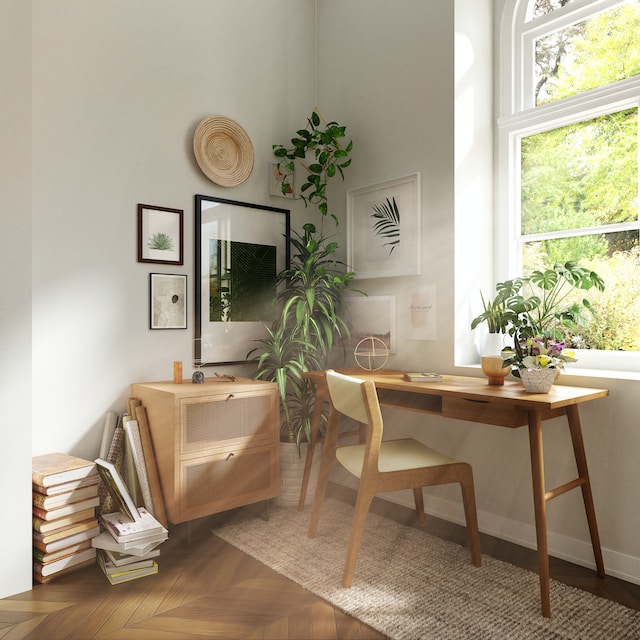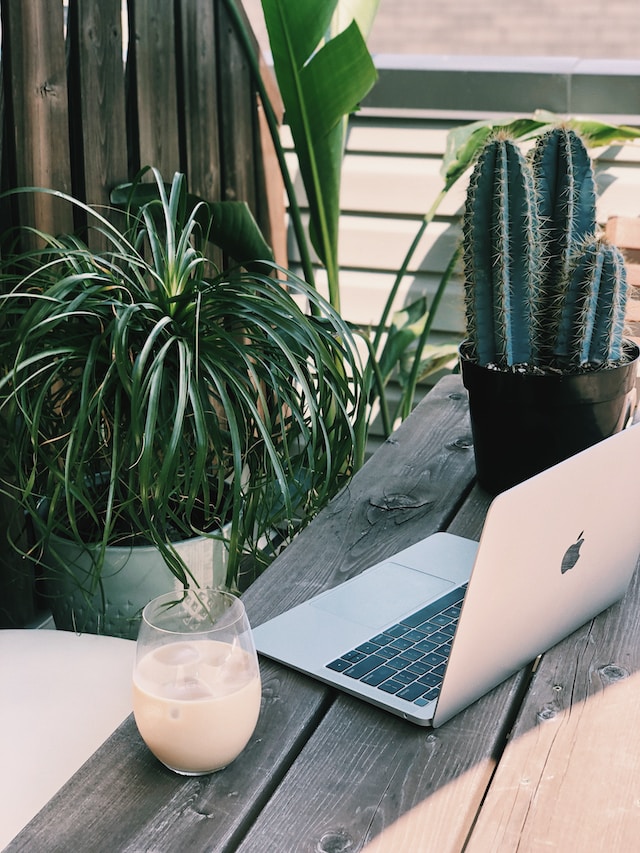
Creating a sustainable home office is not only about being environmentally conscious but also about improving productivity and well-being. As we embrace the idea of remote work, it becomes vital to transform our workspace into a green haven that promotes focus and creativity while minimizing our impact on the planet through sustainable design.
By incorporating eco-friendly practices and materials, you can forge a harmonious connection between your work and the environment, ultimately leading to enhanced productivity and a healthier work-life balance. In this article, we explore practical tips and inspiring ideas to help you craft a sustainable home office that embodies both functionality and environmental consciousness. Let us embark on this journey towards a greener and more productive workspace.
Choosing the Right Space
Before you begin setting up your sustainable home office, it’s essential to choose the right space that aligns with your needs and promotes a harmonious work environment. From finding the optimal location to utilizing natural light, every aspect contributes to creating a productive and eco-friendly workspace. Let’s explore some ideas to guide you in selecting the perfect area for your sustainable home office.
Location, Location, Location
When considering the location for your home office, aim for a space that is separate from distractions, such as the kitchen or living room. Look for a quiet corner or a spare room that allows you to focus and stay undisturbed during work hours. This separation will not only enhance your productivity but also delineate a clear boundary between work and personal life.
Choose a space with ample windows or position your desk near a window to maximize the benefits of natural sunlight. If privacy or excessive sunlight becomes an issue, consider using adjustable blinds or eco-friendly window films that allow you to control the amount of light entering the room.
Consider environmentally conscious options for your office flooring. Opt for sustainable materials like bamboo or cork, which are renewable and durable. These choices not only reduce the carbon footprint but also add a touch of natural warmth to your workspace. Additionally, using rugs made from natural fibers like jute or wool can provide added comfort and insulation.
Creating an organized workspace is crucial for maintaining focus and reducing stress. Minimize clutter and ensure everything has its designated place. Invest in eco-friendly storage solutions such as shelves made from recycled materials or repurposed wooden crates. A clutter-free environment promotes mental clarity and helps you stay more productive throughout the day.
Mindful Material Selection
When creating a sustainable home office, it is essential to consider the materials used for furnishings. From desks to chairs and storage solutions, opting for eco-friendly options not only minimizes your impact on the environment but also creates a healthier and more inspiring workspace. Here are some tips for mindful and eco-friendly furniture selection:
Reclaimed Wood: Incorporating furniture made from reclaimed wood adds a touch of rustic charm to your office while reducing the demand for new trees. Look for desks or shelves crafted from reclaimed wood, or consider repurposing old furniture with a fresh coat of eco-friendly paint or stain.
Natural Fibers: Choose seating options made from natural fibers, such as organic cotton or hemp. A comfortable and sustainable chair not only enhances your posture and productivity but also adds a touch of eco-luxury to your workspace.
Recycled Materials: Look for office furniture made from recycled materials, such as recycled plastic or metal. Many companies now offer stylish and durable chairs, desks, and storage options that give a second life to materials that would otherwise end up in landfills.

Sustainable Fabrics: When selecting upholstered furniture, opt for fabrics made from sustainable materials such as organic wool or hemp. These fabrics are not only better for the environment but also free from toxic chemicals that can off-gas into your workspace.
Non-Toxic Finishes: Ensure that any varnishes, paints, or sealants used on furniture are low or zero-VOC to minimize harmful emissions. Non-toxic finishes not only protect your health but also contribute to better indoor air quality.
Energy-Efficient Lighting
Proper lighting is crucial for a productive and energizing workspace. By opting for energy-efficient lighting solutions, you can reduce your carbon footprint while creating a well-lit environment that promotes focus and creativity. In this section, we explore various lighting options and strategies to help you light up your sustainable home office efficiently and effectively.
LED Lighting
LED (Light Emitting Diode) lighting is a game-changer when it comes to energy efficiency. Compared to traditional incandescent bulbs, LED lights consume significantly less electricity and have a longer lifespan. By replacing your old bulbs with LED equivalents, you can reduce your energy consumption and save money on utility bills. Additionally, LED lights produce less heat, reducing the need for air conditioning, especially during warmer months.
Task Lighting
In a home office, task lighting plays a crucial role in providing focused illumination for specific work areas. Instead of relying solely on overhead lights, consider incorporating desk lamps or adjustable task lights. These localized lighting options enable you to direct light precisely where you need it, minimizing unnecessary energy usage and reducing eye strain.
Motion Sensor Lights: Lights that Adapt
Motion sensor lights are a smart and energy-efficient option for your home office. These lights automatically turn on when they detect movement and switch off when you leave the room. By incorporating motion sensors in areas like hallways or less frequently used spaces, you ensure that lights are only active when truly needed, reducing unnecessary electricity consumption.
Dimmers and Timers
Dimmer switches and timers offer another layer of control when it comes to energy-efficient lighting. Dimming lights not only creates a soothing ambiance but also reduces energy consumption. Utilize timers to automatically turn off lights during specific periods of inactivity, such as after work hours. These simple additions enable you to customize your lighting experience while conserving energy.
Natural Light Maximization
To further enhance energy efficiency and well-being, make the most out of natural light. Position your desk near windows to take advantage of daylight when possible. When natural light is abundant, you can rely less on artificial lighting during daytime hours. Remember to utilize adjustable blinds or eco-friendly window films to control the intensity of sunlight and prevent glare on your computer screen.

Energy Conservation Strategies
Making conscious choices to conserve energy in your sustainable home office not only helps reduce your environmental impact but also saves you money on utility bills. By implementing simple strategies and incorporating energy-saving technologies, you can create an efficient and eco-friendly workspace. In this section, we explore practical tips to minimize energy consumption and maximize productivity in your sustainable home office.
Power Management
Unplug electronic devices when not in use. Many devices continue to consume energy even when they are turned off or in standby mode. Unplugging them entirely prevents “vampire” energy consumption.
Use power strips with surge protectors. Plug your electronic devices into a power strip and switch off the strip when you’re done working. This eliminates standby power and protects against power surges.
Opt for energy-efficient electronics. When purchasing new devices, look for ENERGY STAR certified products that are designed to consume less energy.
Natural Ventilation
Utilize natural ventilation when possible. Open windows and let in fresh air, especially during mild weather. This reduces the need for air conditioning and energy-consuming fans.
Install ceiling or desk fans. Fans are an energy-efficient alternative to air conditioners, providing cooling and air circulation.
Use window coverings strategically. Adjust blinds or curtains to prevent direct sunlight from overheating your workspace, reducing the need for additional cooling.
Efficient Heating and Cooling
Set thermostats at optimal temperatures. Adjust your heating and cooling systems to maintain a comfortable but energy-efficient temperature. Every degree you lower or raise saves energy.
Insulate your office. Ensure your office space is properly insulated to minimize heat transfer, keeping temperatures stable without relying heavily on heating or cooling systems.
Use energy-saving HVAC options. Consider upgrading to energy-efficient heating, ventilation, and air conditioning (HVAC) systems that have programmable settings and motion sensors.

Automate and Optimize
Make the most of automation technology to increase sustainability. Utilize smart power strips and outlets. These devices automatically cut power to devices that are not in use, eliminating phantom energy consumption.
Invest in smart thermostats. These devices learn your temperature preferences and adjust heating and cooling accordingly. They can be programmed to optimize energy usage based on your schedule.
Use smart lighting solutions. Install motion sensors or smart switches that automatically turn off lights when no one is present or adjust lighting levels based on natural light.
Energy-Efficient Equipment
Select energy-efficient office equipment. When purchasing or replacing equipment like computers, printers, and scanners, opt for ENERGY STAR certified models that consume less energy.
Set energy-saving modes. Adjust the settings on your devices to activate energy-saving modes when they are not in use for a certain period.
Print mindfully. Minimize your printing needs, and when necessary, print double-sided or in draft mode to reduce paper and ink usage.
Creating a sustainable home office is not only about reducing our environmental footprint but also about nurturing a space that enhances productivity, creativity, and well-being. By following these tips and incorporating eco-friendly practices, we can transform our home office into a sustainable sanctuary that reflects our values, cultivates productivity, and contributes to a healthier planet. So, let us embark on this journey towards a greener and more productive workspace, where sustainability and success go hand in hand.
